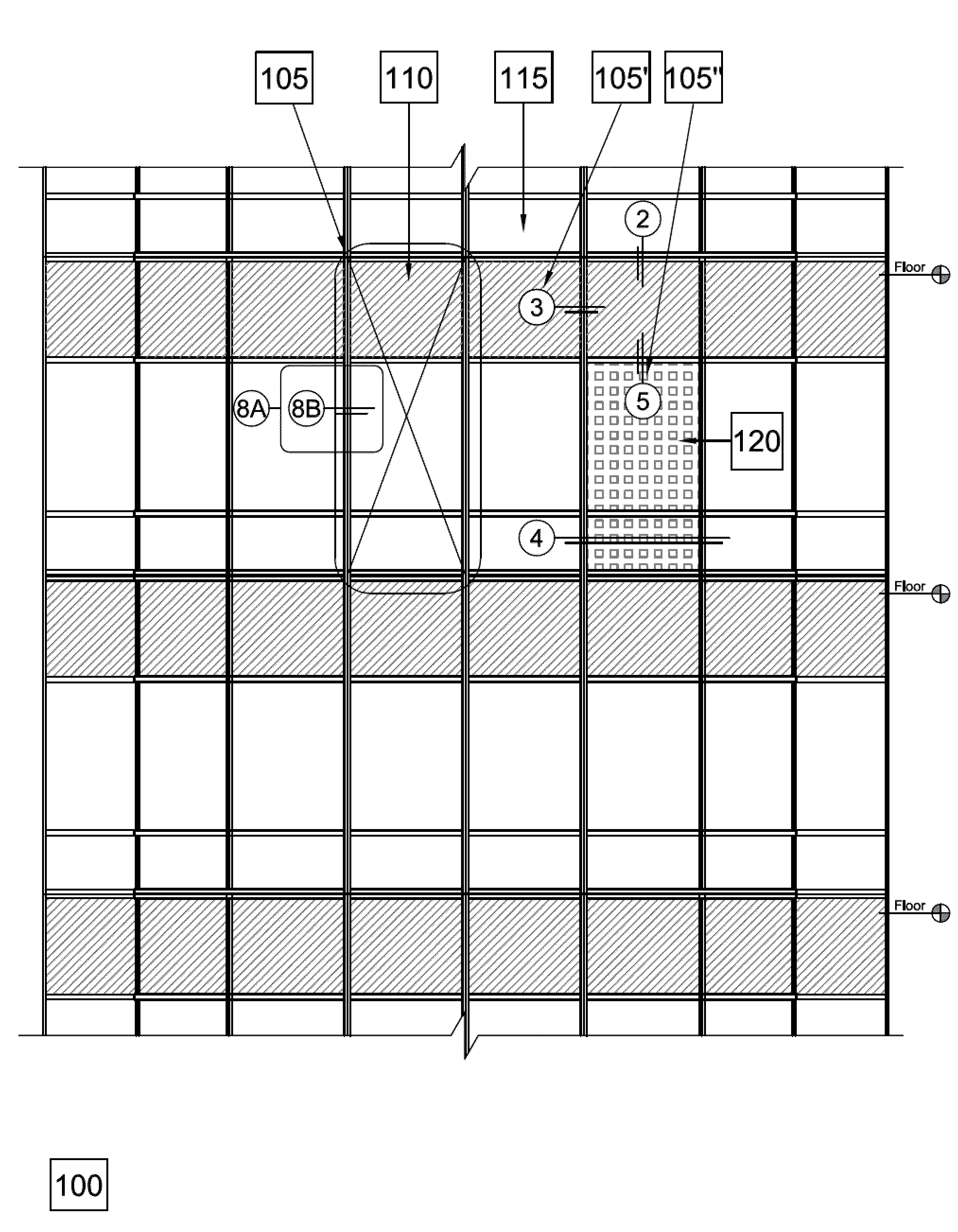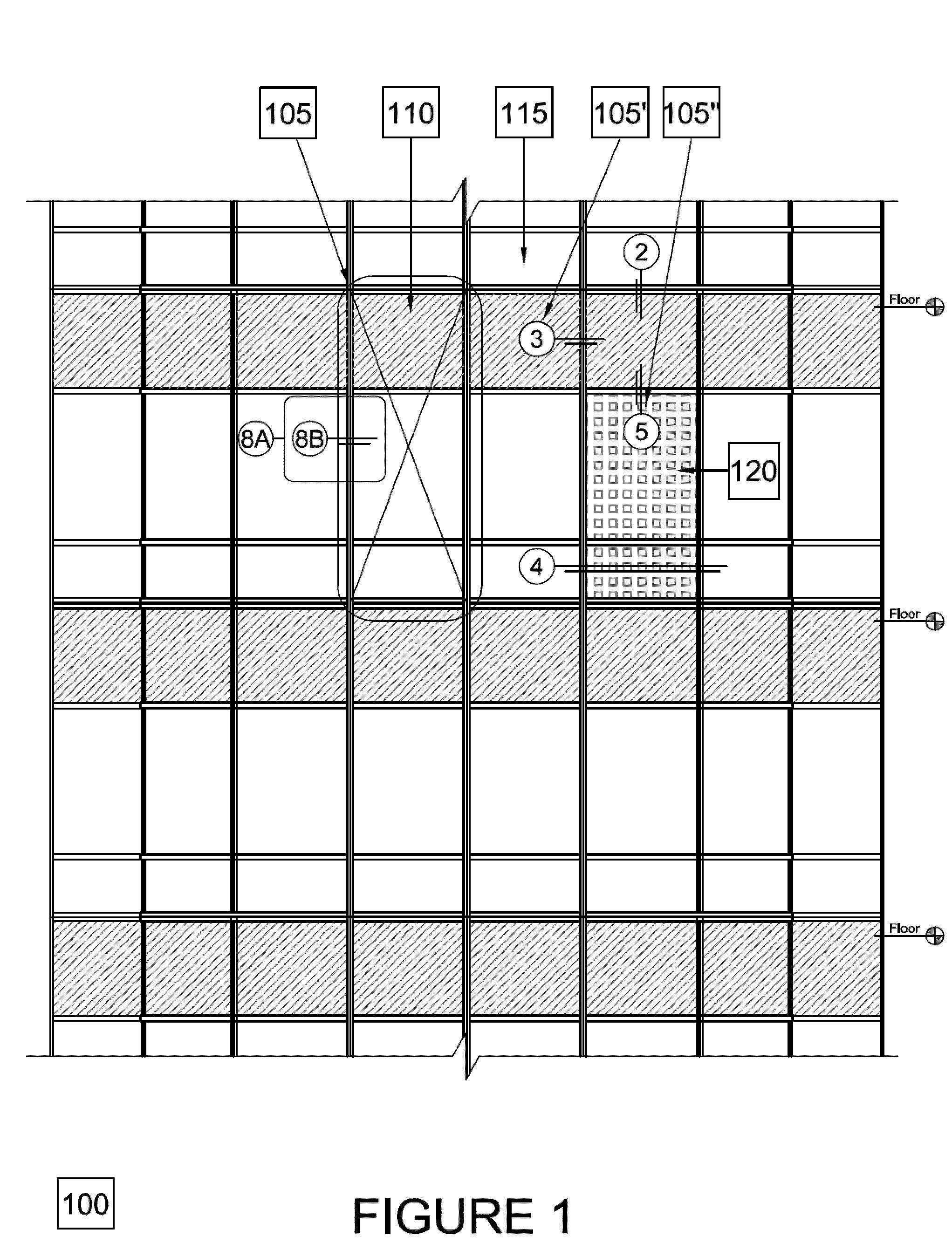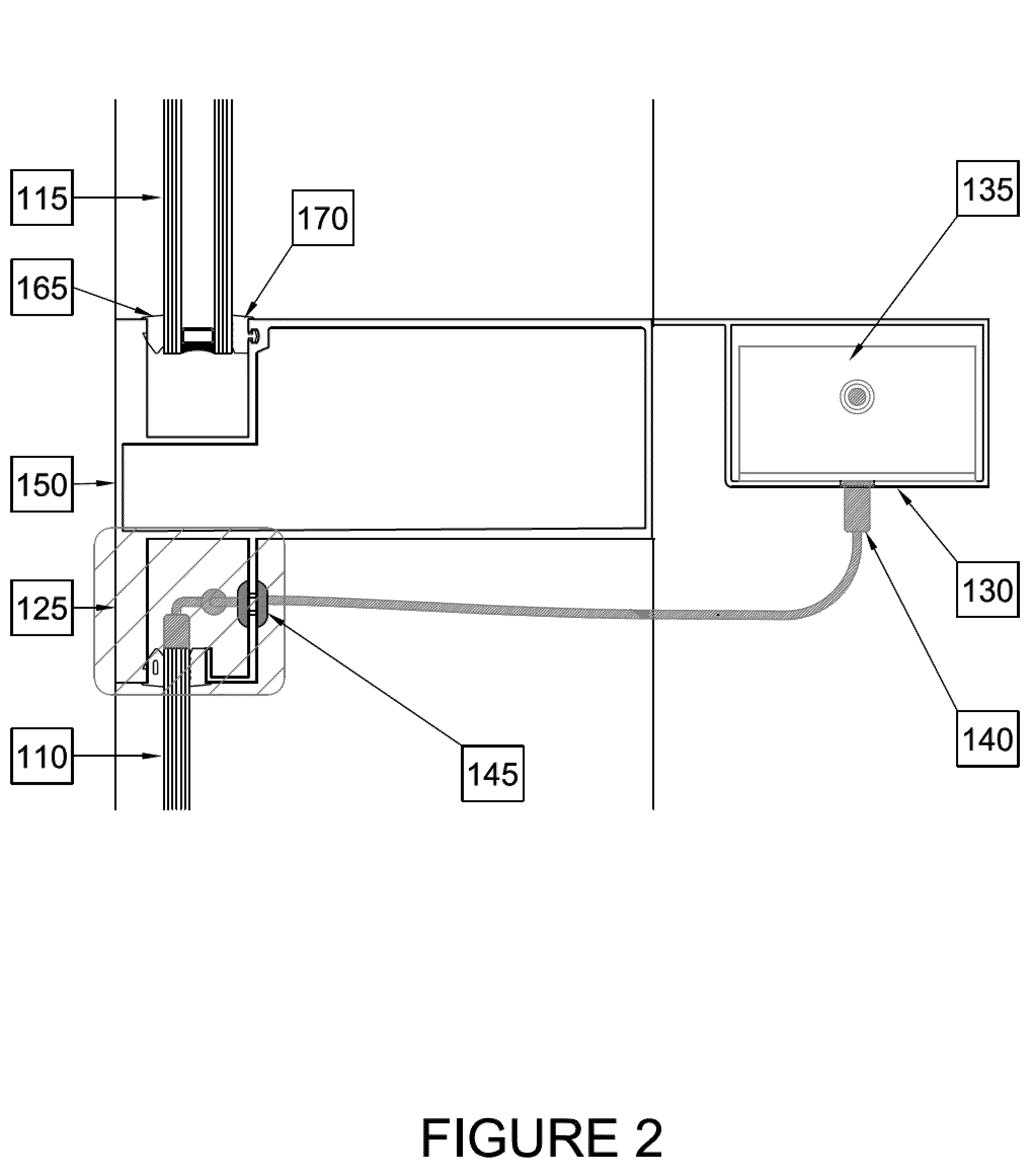Method of Assembling Building Integrated Photovoltaic Conversion System
a photovoltaic conversion and building technology, applied in the field of building integrated photovoltaic conversion systems, can solve the problems of limited photovoltaic capability, limited photovoltaic capability, and limited photovoltaic capability of conventional roof-top based systems, and achieve the effects of reducing the performance of conventional series-connected solar panels, and reducing the efficiency of building construction
- Summary
- Abstract
- Description
- Claims
- Application Information
AI Technical Summary
Benefits of technology
Problems solved by technology
Method used
Image
Examples
Embodiment Construction
[0040]The present invention preferably incorporates mono and / or poly silicon crystalline cells used for converting solar energy into electrical energy, such as those offered by Suntech Power Holdings Co. Ltd. (Suntech) directly into standardized curtain wall products, such as those offered by Architectural Glass and Aluminum Co, Inc (AGA) of Alameda California. The AGA curtain wall products are well-known durable exterior façades. The end result is a solar power generation system that also, much in the same manner as conventional curtain wall, functionally and aesthetically encloses a building.
[0041]By incorporating solar energy directly in the construction process for a building, the cost of implementing such green capability is greatly reduced. The cost of operating such buildings also goes down dramatically as a result of net energy savings by reducing the need for lighting using Daylighting Techniques and by controlling the solar heat gain and envelope U-value to reduce the ener...
PUM
| Property | Measurement | Unit |
|---|---|---|
| open-circuit voltage | aaaaa | aaaaa |
| voltage | aaaaa | aaaaa |
| electrical | aaaaa | aaaaa |
Abstract
Description
Claims
Application Information
 Login to View More
Login to View More - R&D
- Intellectual Property
- Life Sciences
- Materials
- Tech Scout
- Unparalleled Data Quality
- Higher Quality Content
- 60% Fewer Hallucinations
Browse by: Latest US Patents, China's latest patents, Technical Efficacy Thesaurus, Application Domain, Technology Topic, Popular Technical Reports.
© 2025 PatSnap. All rights reserved.Legal|Privacy policy|Modern Slavery Act Transparency Statement|Sitemap|About US| Contact US: help@patsnap.com



